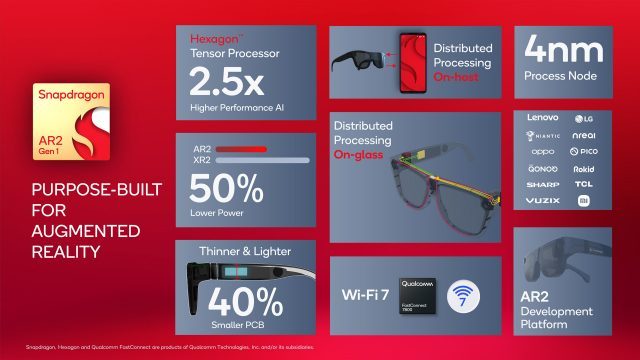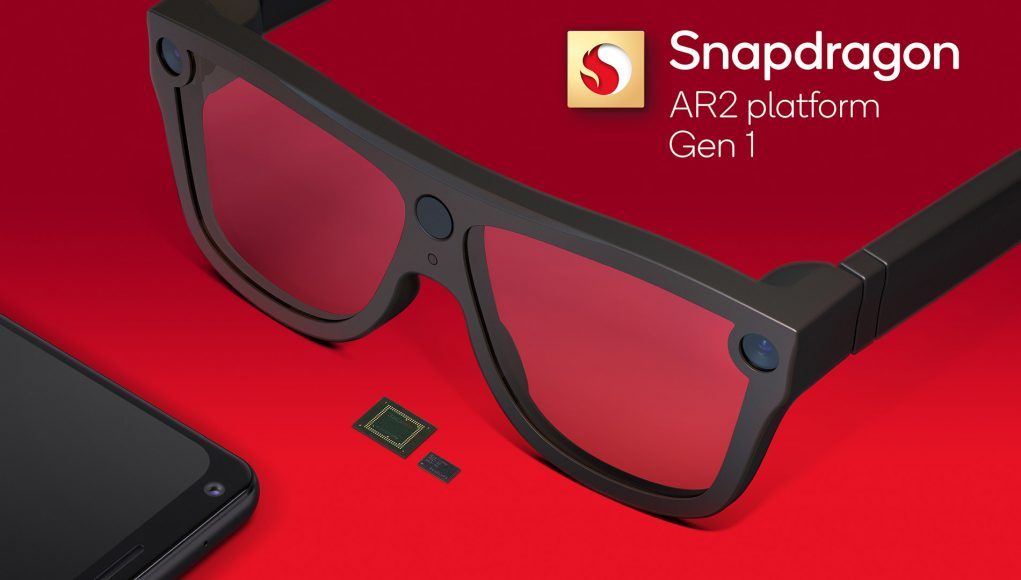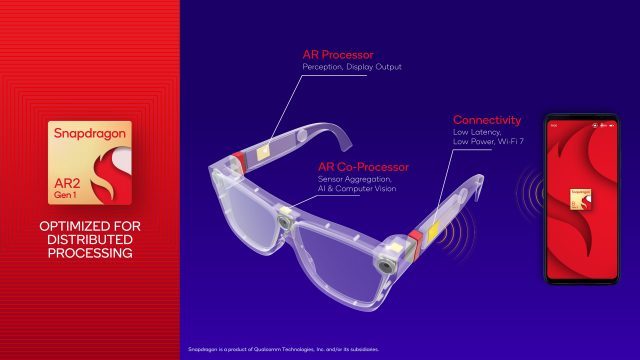Qualcomm today announced Snapdragon AR2, its “purpose-built headworn augmented reality platform.” Differentiating from the company’s existing Snapdragon XR2 chips, Qualcomm says the AR2 architecture is better suited for creating AR glasses with low power consumption and compact form factors.
Today during Qualcomm’s Snapdragon Summit event, the company revealed the Snapdragon AR2 platform which consists of a trio of chips which the company says will help make truly glasses-sized AR devices possible.
Qualcomm was early to the standalone VR space and has been dominant with its Snapdragon XR2 chips which have found their way into many of the leading standalone headsets on the market, and are now in more than 60 devices total, the company says.
Aiming to take a similar bite out of the forthcoming AR glasses segment, Qualcomm has created a new Snapdragon AR2 platform with a distributed processing design. The platform consists of three chips:
- AR processor (for sensor perception and video output)
- AR co-processor (for sensor fusion and dedicated computer vision tasks)
- Wi-Fi 7 chip (for communication to a host processing device)
By creating a more distributed workload across a main processor and a co-processor, Qualcomm claims AR2 is up to 50% more power efficient while offering 2.5 times better AI performance, and a more compact form-factor, compared to the single-chip Snapdragon XR2 solution.
Not only will the AR processor and co-processor help share a workload, Qualcomm also sees AR2 devices using the speedy Wi-Fi 7 chip to communicate with a host device like a smartphone or wireless compute puck that will do the heavy lifting like application processing and rendering. Qualcomm claims the Wi-Fi 7 chip (FastConnect 7800) can achieve 5.8 Gbps bandwidth with just 2ms of latency.
Using this three-chip framework for distributed processing, Qualcomm claims it will be possible to build compact AR glasses that consume less than one watt of power.
The AR2 platform supports up to nine concurrent cameras for a bevy of head-tracking, environment-sensing, and user-tracking tasks.
 “We built Snapdragon AR2 to address the unique challenges of headworn AR and provide industry leading processing, AI and connectivity that can fit inside a stylish form factor,” said Hugo Swart, vice president of XR product management at Qualcomm. “With the technical and physical requirements for VR/MR and AR diverging, Snapdragon AR2 represents another metaverse-defining platform in our XR portfolio to help our OEM partners revolutionize AR glasses.”
“We built Snapdragon AR2 to address the unique challenges of headworn AR and provide industry leading processing, AI and connectivity that can fit inside a stylish form factor,” said Hugo Swart, vice president of XR product management at Qualcomm. “With the technical and physical requirements for VR/MR and AR diverging, Snapdragon AR2 represents another metaverse-defining platform in our XR portfolio to help our OEM partners revolutionize AR glasses.”
 There’s no word yet on when the first AR2 devices will hit the market, but Qualcomm lists a handful of partners actively working with the platform: Lenovo, LG, Niantic, Nreal, Oppo, Pico, Qonoq, Rokid, Sharp, TCL, Vuzix, and Xiaomi.
There’s no word yet on when the first AR2 devices will hit the market, but Qualcomm lists a handful of partners actively working with the platform: Lenovo, LG, Niantic, Nreal, Oppo, Pico, Qonoq, Rokid, Sharp, TCL, Vuzix, and Xiaomi.








